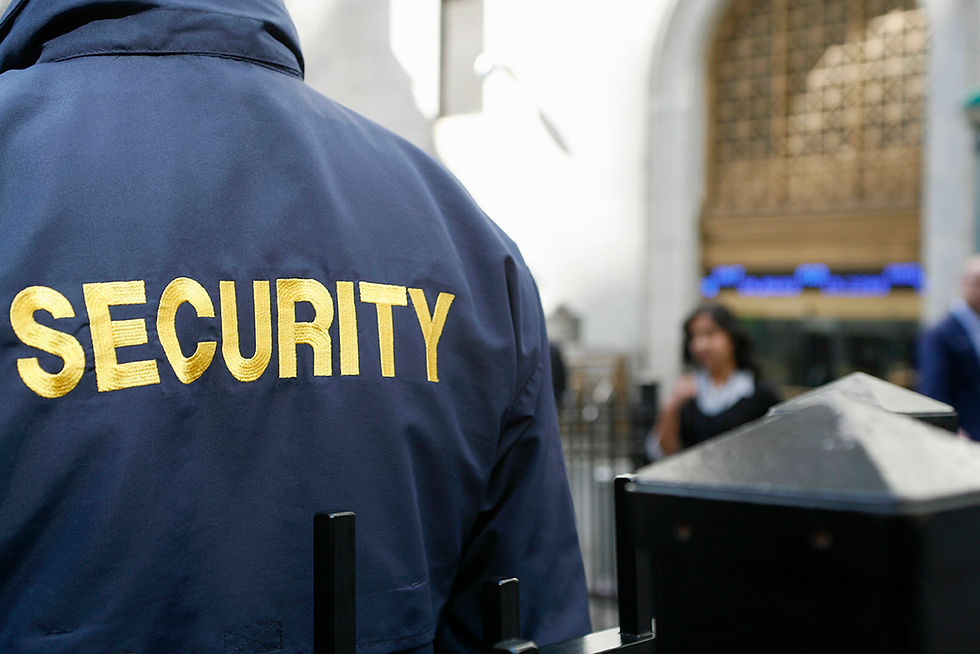Recent Advancements in School Safety: An Overview
- Nonprofit Staff

- Jun 1, 2023
- 3 min read
School safety continues to be a vital area of focus, and recent advancements reflect an evolving understanding of the multifaceted nature of this issue. With a shift from solely physical security measures to more holistic approaches, the landscape of school safety has significantly changed over the last few years.
Mental Health and Behavioral Assessment
A crucial part of recent advancements in school safety is a growing emphasis on mental health and behavioral threat assessments. It is increasingly acknowledged that school safety goes beyond physical security measures and involves addressing the mental well-being of students and staff alike. Schools across the United States have started implementing behavioral threat assessments and violence prevention strategies at the state level, a critical step towards understanding and addressing potential concerns before they escalate into serious incidents.
The ongoing conversation around mental health and its impact on staff and students is anticipated to continue in 2023. Despite the challenges in hiring the required mental health professionals, it is believed that states, districts, and communities will find creative solutions to provide these critical resources, further enhancing school safety.
Building a Culture of Belonging Another critical aspect of modern school safety strategies involves fostering a culture of belonging within schools. Safety offices are increasingly contributing to recruitment and retention efforts to make students feel welcome at their institutions. Schools are developing outreach programs to establish meaningful connections with the community. These programs aim to connect with students at a deeper level than in previous years, and they often involve social media pages, comfort K9s, collaborative events with student organizations, and other initiatives aimed at developing a culture of hospitality while still ensuring a safe campus environment.
Compliance Mandates and Funding In recent years, there has been a significant increase in buy-in at the school district level for comprehensive safety and security measures. These measures encompass mental and behavioral health, behavioral threat analyses, and a focus on improving school culture to create a ‘social and emotional climate.’ With the flow of state and federal government funds for safety and security into schools, there is an expectation for compliance mandates to be put into effect. These mandates will likely be enforced by withholding funds if schools are audited and found not in compliance.
Furthermore, legislation and funding for school safety are making a real difference. States like Ohio, for instance, are providing legislation and funding that significantly impact school safety. They offer training for Law Enforcement Officers to conduct Security and Vulnerability Assessments for their local schools and require each school building to have a Threat Assessment Team (TAT).

"According to the National Threat Assessment Center at the United States Secret Service, “The goal of a Threat Assessment Team is to identify students of concern, assess their risk for engaging in violence or other harmful 8 Comprehensive School Suicide Prevention Program: This program describes a set of school-based strategies aimed at preventing and addressing adolescent suicide on multiple levels. Comprehensive school suicide prevention is important because efforts can be made within the school to protect adolescents from suicide as well as to quickly detect warning signs and risk factors in adolescents who are suicidal. This ensures that adolescents at risk receive the help they need. Effective comprehensive school suicide prevention programs consist of three levels: Primary Prevention (prevention), Secondary Prevention (intervention), and Tertiary Prevention (postvention). All three levels are needed for schools to comprehensively address adolescent suicide. More information and resources can be found here. activities, and identify intervention strategies to manage that risk.” (USSS, NTAC, “Enhancing School Safety Using a Threat Assessment Model: An Operational Guide for Preventing Targeted School Violence” (2018), pp 5.) Ohio’s 133rd General Assembly enacted House Bill 123, the “Safety and Violence Education Students (SAVE Students) Act,” regarding school security and youth suicide awareness education and training." -Page 7 of their comprehension guide.
Cybersecurity With the rise of remote learning and the increasing digitalization of education, cybersecurity has become a more prominent concern. Higher education institutions, in particular, are expected to strengthen their cybersecurity efforts in 2023 in response to an anticipated increase in threats. Measures such as the installation of biometric authentication methods are being taken to defend against phishing, fraud, and identity cyberattacks. As remote and hybrid work methods continue to be prominent, there is a shift towards stronger identity solutions to maintain security efforts.

The recent advancements in school safety reflect a nuanced understanding of the issue, encompassing mental health, a culture of belonging, compliance mandates, funding, and cybersecurity. These comprehensive measures aim to create safer and more inclusive educational environments for students and staff alike.







This overview provides a reassuring look at how far school safety measures have come. It's encouraging to see technology and community engagement being prioritized together. On a related note, building a sense of belonging through school pride is also vital—something as simple as wearing a team-inspired piece like the Matildas 2023 Puffer Blue Jacket can subtly boost unity and morale among students. Keep up the great work in raising awareness!